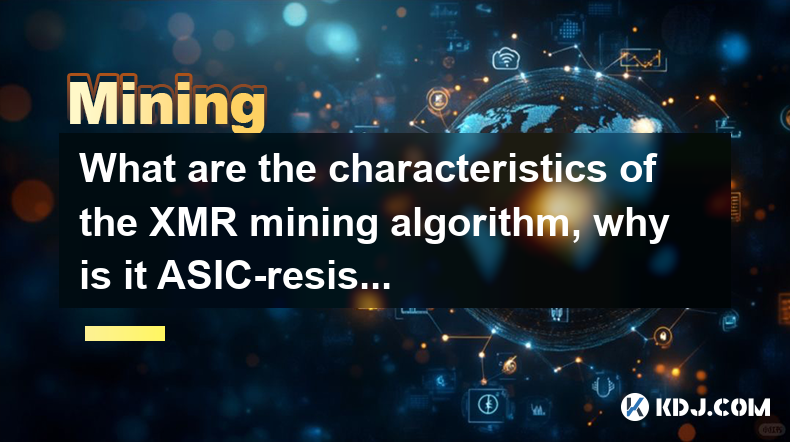-
 Bitcoin
Bitcoin $107,380.2492
-0.19% -
 Ethereum
Ethereum $2,496.4194
2.52% -
 Tether USDt
Tether USDt $1.0002
0.01% -
 XRP
XRP $2.2698
3.58% -
 BNB
BNB $658.6709
1.57% -
 Solana
Solana $156.2095
3.14% -
 USDC
USDC $1.0000
0.01% -
 TRON
TRON $0.2795
1.31% -
 Dogecoin
Dogecoin $0.1664
1.40% -
 Cardano
Cardano $0.5812
3.78% -
 Hyperliquid
Hyperliquid $40.8539
6.14% -
 Bitcoin Cash
Bitcoin Cash $513.3617
3.74% -
 Sui
Sui $2.7992
-0.38% -
 Chainlink
Chainlink $13.5045
1.13% -
 UNUS SED LEO
UNUS SED LEO $9.0369
-0.11% -
 Avalanche
Avalanche $18.0365
-0.20% -
 Stellar
Stellar $0.2401
1.74% -
 Toncoin
Toncoin $2.9395
2.20% -
 Shiba Inu
Shiba Inu $0.0...01148
-0.46% -
 Litecoin
Litecoin $86.8907
0.16% -
 Hedera
Hedera $0.1521
2.24% -
 Monero
Monero $320.1315
3.06% -
 Polkadot
Polkadot $3.4232
-0.02% -
 Dai
Dai $0.9999
0.01% -
 Bitget Token
Bitget Token $4.5549
-0.85% -
 Ethena USDe
Ethena USDe $1.0003
0.00% -
 Uniswap
Uniswap $7.2040
0.12% -
 Aave
Aave $277.8968
1.91% -
 Pepe
Pepe $0.0...09854
2.02% -
 Pi
Pi $0.5106
-3.03%
What are the characteristics of the XMR mining algorithm, why is it ASIC-resistant?
Monero's RandomX algorithm, designed to be ASIC-resistant, uses memory-hardness and random code execution to promote fair, decentralized mining on CPUs and GPUs.
May 05, 2025 at 06:21 am

The Monero (XMR) cryptocurrency uses a unique mining algorithm known as RandomX, which was specifically designed to be ASIC-resistant and to promote fair and decentralized mining. In this article, we will explore the characteristics of the RandomX algorithm and explain why it is effective in resisting ASICs.
What is RandomX?
RandomX is the mining algorithm used by Monero since November 2019. It replaced the previous CryptoNight algorithm, which had begun to see the development of ASIC miners. RandomX is designed to leverage the general-purpose computing capabilities of CPUs and GPUs, making it more accessible to a wider range of users.
RandomX is a proof-of-work algorithm that utilizes a combination of random code execution and memory-hard functions. This design aims to ensure that mining remains feasible on commodity hardware, thereby maintaining the decentralized nature of the network.
Key Characteristics of RandomX
Memory-Hardness: One of the primary features of RandomX is its memory-hardness. This means that the algorithm requires a significant amount of memory to operate efficiently. By demanding large amounts of memory, RandomX makes it difficult for ASICs to be designed specifically for the algorithm, as memory cannot be as easily optimized as other components in an ASIC.
Random Code Execution: Another crucial characteristic of RandomX is its use of random code execution. The algorithm generates random sequences of instructions that are executed on the mining hardware. This randomness ensures that no single piece of hardware can be optimized to perform the mining tasks more efficiently than others. This feature significantly reduces the advantage that ASICs might have over CPUs and GPUs.
Adaptability: RandomX is designed to be adaptable. The algorithm can be updated and modified to counteract any attempts to develop ASICs for it. This adaptability is a critical factor in maintaining the algorithm's resistance to ASICs over time.
Why is RandomX ASIC-Resistant?
Difficulty in Optimization: The memory-hard nature of RandomX makes it challenging for ASIC designers to optimize their hardware. ASICs are typically designed to perform specific tasks very efficiently, but the high memory requirements of RandomX make it difficult to achieve significant performance gains over CPUs and GPUs.
Randomness and Complexity: The use of random code execution adds a layer of complexity that ASICs struggle to handle. Since the instructions executed are random, ASICs cannot be pre-programmed to handle specific operations more efficiently. This randomness ensures that ASICs do not gain a significant advantage over general-purpose hardware.
Frequent Updates: The Monero development team regularly updates the RandomX algorithm to stay ahead of potential ASIC development. These updates can change the way the algorithm operates, making it necessary for ASIC manufacturers to constantly redesign their products. This constant need for redesign makes it economically unviable for ASIC manufacturers to invest in developing ASICs for RandomX.
Impact on Mining Hardware
CPU and GPU Mining: RandomX's design favors CPU and GPU mining. CPUs and GPUs are general-purpose computing devices that can handle the memory-hard and random nature of the algorithm. This means that more individuals can participate in mining, leading to a more decentralized network.
Community Support: The Monero community strongly supports the use of RandomX and the principles of ASIC resistance. This support ensures that the algorithm continues to evolve and maintain its resistance to ASICs. Community-driven development and feedback play a crucial role in keeping the algorithm effective.
Technical Details of RandomX
Execution Model: RandomX operates on a JIT (Just-In-Time) compilation model. The algorithm generates random code that is compiled and executed on the fly. This approach ensures that the mining process remains unpredictable and difficult to optimize.
Memory Access Patterns: The algorithm uses pseudo-random memory access patterns. This means that the memory accessed during the mining process is not predictable, adding another layer of complexity for ASIC designers.
Hash Function: RandomX uses the Blake2b hash function as part of its operation. This hash function is known for its efficiency and security, contributing to the overall effectiveness of the algorithm.
Practical Implications for Miners
Setting Up a RandomX Miner: To start mining Monero using RandomX, miners need to follow a few steps:
- Choose a Mining Software: Select a mining software that supports RandomX, such as XMRig or MoneroSpv.
- Download and Install: Download the chosen software and follow the installation instructions provided by the software's documentation.
- Configure the Software: Set up the mining software by entering your Monero wallet address and selecting a mining pool. Ensure that the software is configured to use RandomX.
- Start Mining: Launch the mining software and begin mining. Monitor the performance and adjust settings as needed to optimize your mining efficiency.
Monitoring and Optimization: Miners should regularly monitor their mining performance and stay updated on any changes to the RandomX algorithm. Adjusting settings and optimizing hardware can help maintain efficient mining operations.
Frequently Asked Questions
Q: Can RandomX be mined on mobile devices?
A: While it is technically possible to mine RandomX on mobile devices, it is not practical due to the high memory requirements and the limited processing power of most mobile devices. Mining on mobile devices would be inefficient and could lead to overheating and battery drain.
Q: How does RandomX affect the energy consumption of mining?
A: RandomX's design to favor CPUs and GPUs means that mining can be done on more energy-efficient hardware compared to ASICs. However, the energy consumption still depends on the specific hardware used and the efficiency of the mining setup.
Q: Are there any known vulnerabilities in RandomX?
A: As of the latest updates, there are no known vulnerabilities in RandomX that would compromise its ASIC resistance. The Monero development team continuously monitors and addresses any potential issues to maintain the algorithm's integrity.
Q: How does RandomX compare to other ASIC-resistant algorithms?
A: RandomX is considered one of the most effective ASIC-resistant algorithms due to its memory-hardness and random code execution. Compared to other algorithms like Ethash (used by Ethereum), RandomX's design makes it more challenging for ASICs to gain a significant advantage.
Disclaimer:info@kdj.com
The information provided is not trading advice. kdj.com does not assume any responsibility for any investments made based on the information provided in this article. Cryptocurrencies are highly volatile and it is highly recommended that you invest with caution after thorough research!
If you believe that the content used on this website infringes your copyright, please contact us immediately (info@kdj.com) and we will delete it promptly.
- SUI, TVL, BlockDAG: Navigating the Altcoin Landscape with Strategic Vision
- 2025-07-01 04:30:12
- BlockDAG, Cryptos, 2025 Trends: What's Hot and What's Not
- 2025-07-01 05:10:12
- Avalanche's Reign Challenged: Will Ruvi AI Lead the Next Bull Run?
- 2025-07-01 05:10:12
- Score Big with BetMGM Bonus: MLB, Soccer, and More!
- 2025-07-01 05:15:12
- Michael Saylor's Bitcoin Binge: What's Driving the $500 Million Purchase?
- 2025-07-01 04:30:12
- OKX and Binance Delist Trading Pairs: What's Going On?
- 2025-07-01 02:30:12
Related knowledge

What is liquidity mining in DeFi? How to participate and calculate the income?
Jun 20,2025 at 03:21pm
Understanding Liquidity Mining in DeFiLiquidity mining is a core concept in the decentralized finance (DeFi) ecosystem that allows users to earn rewards by providing liquidity to decentralized exchanges (DEXs) or lending platforms. In traditional finance, liquidity providers are usually institutional players, but DeFi democratizes this process, enabling...

What is the mining mechanism of digital currency? What hardware and cost investment are required?
Jun 23,2025 at 06:29am
Understanding the Mining Mechanism of Digital CurrencyThe mining mechanism of digital currency is a foundational process that ensures transaction validation and network security. In most Proof-of-Work (PoW) cryptocurrencies like Bitcoin, miners compete to solve complex mathematical puzzles using computational power. The first miner to find a valid solut...

Analysis of hybrid mining protocol: PoW+PoS hybrid profit calculation
Jun 23,2025 at 10:15am
Understanding Hybrid Mining ProtocolsIn the realm of blockchain technology, consensus mechanisms are pivotal in maintaining network integrity and transaction validation. A hybrid mining protocol combines two or more consensus algorithms to achieve a balance between security, decentralization, and energy efficiency. The most commonly adopted hybrid model...

How to operate option mining? Hedging strategy and profit structure
Jun 21,2025 at 03:29pm
What is Option Mining?Option mining refers to a decentralized finance (DeFi) strategy where participants provide liquidity or take specific derivative positions in options protocols to earn rewards. Unlike traditional yield farming, option mining often involves liquidity provision for options markets, allowing users to generate returns through premiums ...

What are the advantages of Layer2 mining? Gas saving and project inventory
Jun 20,2025 at 04:50am
Understanding Layer2 Mining and Its SignificanceLayer2 mining refers to the process of participating in decentralized applications or protocols that operate on top of a primary blockchain (such as Ethereum) using scaling solutions like Optimism, Arbitrum, or zkSync. Unlike traditional mining on Layer1 blockchains, which often involves high computational...

Is contract mining safe? Key points of smart auditing and vulnerability prevention
Jun 19,2025 at 08:08pm
Understanding Contract Mining in the Cryptocurrency SpaceContract mining refers to a method within blockchain ecosystems where users can participate in mining operations through smart contracts. Unlike traditional mining, which requires physical hardware and technical expertise, contract mining allows participants to invest funds into a mining pool or p...

What is liquidity mining in DeFi? How to participate and calculate the income?
Jun 20,2025 at 03:21pm
Understanding Liquidity Mining in DeFiLiquidity mining is a core concept in the decentralized finance (DeFi) ecosystem that allows users to earn rewards by providing liquidity to decentralized exchanges (DEXs) or lending platforms. In traditional finance, liquidity providers are usually institutional players, but DeFi democratizes this process, enabling...

What is the mining mechanism of digital currency? What hardware and cost investment are required?
Jun 23,2025 at 06:29am
Understanding the Mining Mechanism of Digital CurrencyThe mining mechanism of digital currency is a foundational process that ensures transaction validation and network security. In most Proof-of-Work (PoW) cryptocurrencies like Bitcoin, miners compete to solve complex mathematical puzzles using computational power. The first miner to find a valid solut...

Analysis of hybrid mining protocol: PoW+PoS hybrid profit calculation
Jun 23,2025 at 10:15am
Understanding Hybrid Mining ProtocolsIn the realm of blockchain technology, consensus mechanisms are pivotal in maintaining network integrity and transaction validation. A hybrid mining protocol combines two or more consensus algorithms to achieve a balance between security, decentralization, and energy efficiency. The most commonly adopted hybrid model...

How to operate option mining? Hedging strategy and profit structure
Jun 21,2025 at 03:29pm
What is Option Mining?Option mining refers to a decentralized finance (DeFi) strategy where participants provide liquidity or take specific derivative positions in options protocols to earn rewards. Unlike traditional yield farming, option mining often involves liquidity provision for options markets, allowing users to generate returns through premiums ...

What are the advantages of Layer2 mining? Gas saving and project inventory
Jun 20,2025 at 04:50am
Understanding Layer2 Mining and Its SignificanceLayer2 mining refers to the process of participating in decentralized applications or protocols that operate on top of a primary blockchain (such as Ethereum) using scaling solutions like Optimism, Arbitrum, or zkSync. Unlike traditional mining on Layer1 blockchains, which often involves high computational...

Is contract mining safe? Key points of smart auditing and vulnerability prevention
Jun 19,2025 at 08:08pm
Understanding Contract Mining in the Cryptocurrency SpaceContract mining refers to a method within blockchain ecosystems where users can participate in mining operations through smart contracts. Unlike traditional mining, which requires physical hardware and technical expertise, contract mining allows participants to invest funds into a mining pool or p...
See all articles

























































































